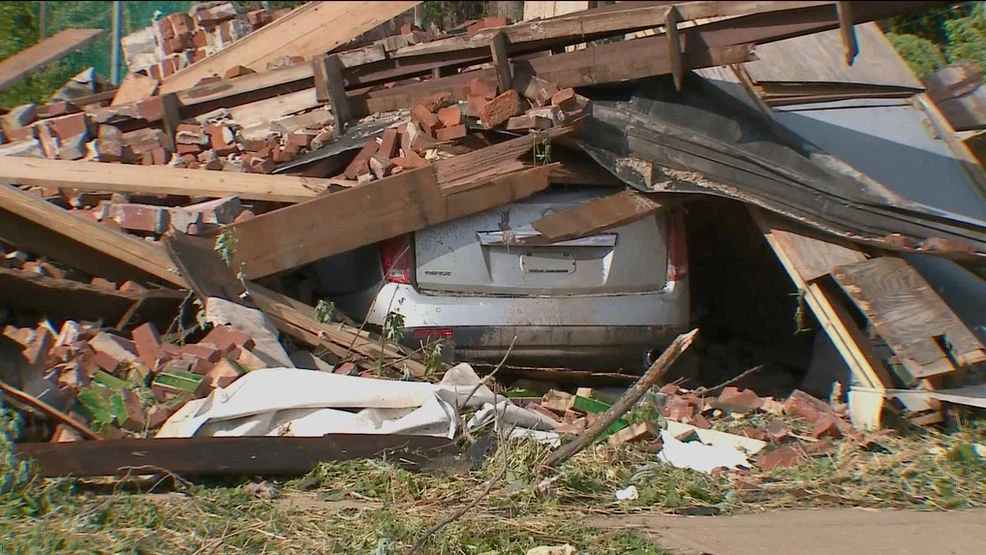In a tragic turn of events, deadly storms have battered the Midwest and Southern regions of the United States, leaving behind a trail of destruction and loss. As of Saturday, May 17, 2025, authorities report that at least 27 people have died in the wake of powerful tornadoes and widespread flooding. Kentucky has been particularly devastated, with 18 confirmed fatalities, while Missouri and other neighboring states have also sustained significant damage.
The storm system, which developed earlier in the week, intensified rapidly, producing multiple tornadoes, severe winds, and flash floods across several states. The hardest-hit areas have declared states of emergency as emergency crews and volunteers work around the clock to search for survivors, restore power, and provide critical aid.
Kentucky Hit Hardest
Kentucky Governor Andy Beshear described the damage as “unlike anything we’ve seen in years,” highlighting the scale of destruction in small towns and rural areas. The governor confirmed during a press briefing that 18 people lost their lives across the state, and dozens more were injured.
Entire communities have been flattened, homes were torn from their foundations, and many residents remain missing. Rescue teams have been dispatched to sift through debris and flooded areas in hopes of finding survivors.
“This is a time for unity, compassion, and swift action,” Governor Beshear said. “We will rebuild, but the human toll is devastating.”
Missouri and Surrounding States Also Suffer
Missouri was another state pummeled by the storm system. Tornadoes ripped through multiple counties, overturning vehicles, downing trees, and damaging infrastructure. Floodwaters have rendered several roads impassable, complicating emergency response efforts.
In addition to Missouri and Kentucky, other states affected include Illinois, Tennessee, and Arkansas, where heavy rain caused rivers and streams to swell rapidly, breaching levees and inundating towns.
The National Weather Service (NWS) has issued continued flood warnings for parts of the region. For live updates and warnings, visit the NWS Alerts Page.
Emergency Response and Federal Assistance
FEMA (Federal Emergency Management Agency) has deployed disaster response teams to assess the situation and provide immediate support. The agency is coordinating with state and local officials to ensure the swift delivery of food, water, medical aid, and temporary housing for displaced residents.
President Joe Biden has offered federal assistance and declared several counties in Kentucky and Missouri as disaster zones, allowing them to receive emergency funds and resources.
“Our hearts are with the victims and their families,” said President Biden. “The federal government stands ready to help in every way possible.”
Updates from FEMA can be accessed via their official Disaster Relief page.
Climate Change and Severe Weather
Meteorologists and climate experts have pointed out that while tornadoes are not new to the region, the frequency and intensity of such storm systems appear to be increasing. Many believe that climate change is contributing to more extreme and unpredictable weather patterns.
“These are not isolated incidents,” said Dr. Renee Morgan, a climatologist at the University of Chicago. “Warmer temperatures and atmospheric instability are creating the perfect conditions for violent storms.”
The Intergovernmental Panel on Climate Change (IPCC) has consistently warned that the U.S. Midwest is at risk of becoming a hotspot for severe weather. For more background on how climate change affects storm intensity, visit NASA’s Climate Website.

How to Help
Numerous charities and organizations are already on the ground, helping those affected by the storms. If you wish to support relief efforts, consider donating to:
Even small contributions can make a big difference for families trying to rebuild after such loss and destruction.
Final Thoughts
The severe weather that has devastated the Midwest and South is a stark reminder of nature’s power and the importance of community resilience. As recovery efforts continue, the thoughts and prayers of the nation are with those who have lost loved ones and homes. The road to recovery will be long, but support from around the country offers a beacon of hope.
Stay informed, stay safe, and support however you can.
